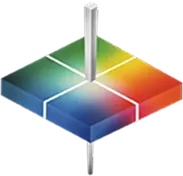How HunterLab Spectrophotometers Meet the Color Standards for Paprika and Oleoresin Spices
The spectrophotometers from HunterLab are an effective solution for monitoring paprika color. Our equipment can identify color variations the human eye cannot see to enhance quality control and production efficiency. You can use your spectrophotometer data to develop color tolerance levels for your paprika production.
Obtain ASTA Values With Vista
Vista is HunterLab’s top-rated spectrophotometer for measuring paprika extract solutions via transmission to determine ASTA values. This device has the lowest total cost of ownership in our range and delivers tangible benefits like high efficiency and maximum value.
We’ve built Vista for easy-to-use operation, including features like one-touch standardization and modular sample handling. Our solution also has USB, Micro USB, and Ethernet ports for quick connectivity and data export.
Plus, Vista includes a spill-resistant sample compartment, industrial-grade construction, and simultaneous haze measurement, making it a versatile workhorse. Onboard software and availability of the most common transmission color and haze scales and indices simplify data analysis.
Choose the ColorFlex L2 for Enhanced Confidence in Paprika Appearance Measurement
The ColorFlex L2 is a highly accurate, easy-to-use solution for various spectral data collection applications, including capturing reflectance measurements in paprika powder. This device provides numerous advantages that make it a superior choice for assessing appearance and true color to uphold product consistency:
- Intuitive design: The solution has a user-friendly design and smart interface to minimize the learning curve.
- Data migration: The solution enables data migration through USB connectivity so users can quickly share and export essential information.
- Advanced software: The solution includes Essentials 2.0, which offers improved reliability and swift access to spectral data results.
- Sampling precision: The solution contains an internal camera, which supports correct positioning and captures live images for data agreement.
- Spectral data accuracy: The solution uses 45°a:0° annular illuminated optical geometry, which delivers exceptional accuracy and aids in quality control.
- Immediate deployment: The solution is ready to use immediately and comes with an integrated wizard for accelerated setup.
Learn More About Color Measurement Solutions From HunterLab
HunterLab is the leading expert in color measurements in the spice industry. We have more than 70 years of experience designing and manufacturing spectrophotometers that deliver consistent and accurate results for color measurements.
Purchase the ColorFlex L2, Vista, or other high-quality spectrophotometers from HunterLab for measuring paprika color today, or contact us for more information.



